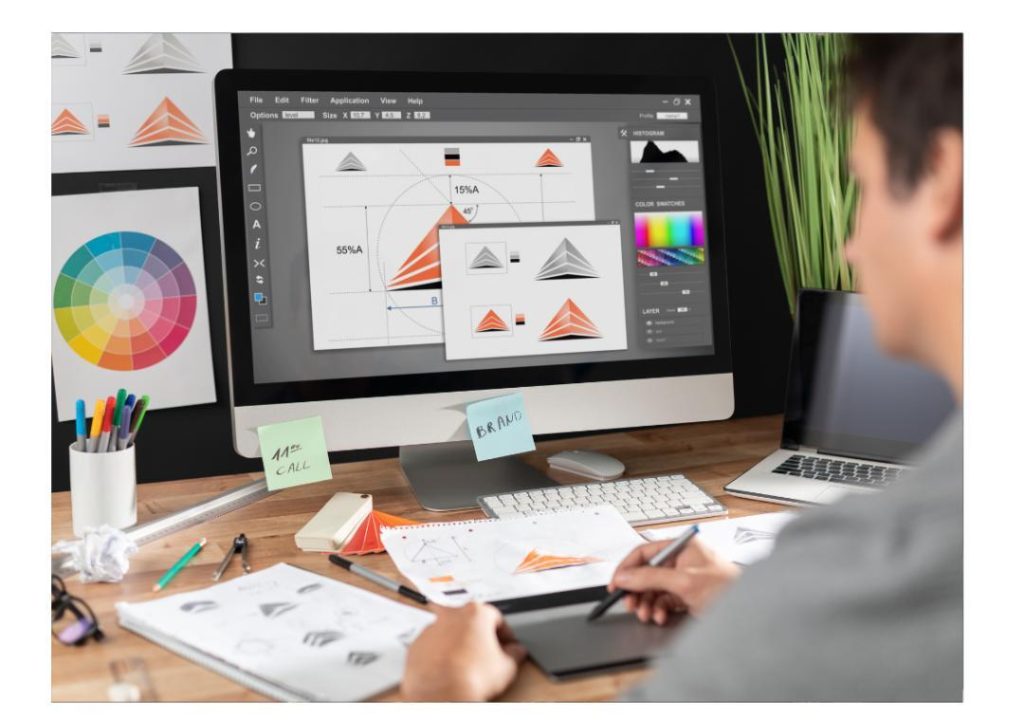
How do designers turn ideas into interfaces?
As designers, we often hear the phrase “turning ideas into interfaces.” But have you ever wondered what exactly goes into making that happen? From conceptualization to implementation, the process is more complex and nuanced than one might think. In this blog post, we’ll delve into the world of design and explore how designers transform ideas into tangible, user-friendly interfaces.
Before diving into the design process, it’s essential to understand that the design journey begins with clear objectives. Whether it’s creating a new brand identity, rebranding an existing one, or designing a new product, the starting point is always the same: understanding the purpose and goals of the project. This clarity enables designers to focus on crafting a user journey that resonates with the target audience.
Crafting the User Journey
With objectives in mind, designers begin mapping out the user journey. This involves identifying pain points, understanding user behavior, and creating a path that guides users through the design. Wireframes, a low-fidelity representation of the design, are used to visualize the layout, flow, and functionality of the interface. These initial sketches serve as a foundation for further refinement, ensuring that the design is functional, intuitive, and user-centric.
Next, designers create mockups, which are higher-fidelity representations of the wireframes. Mockups provide a more detailed look at the design, allowing designers to explore typography, color schemes, and overall aesthetic. This phase is crucial, as it allows designers to experiment with different design elements, ensuring that the final product is visually appealing and cohesive.
Style guides, often created in conjunction with mockups, provide a standardized framework for design consistency. These guides outline the design language, including typography, color palettes, and iconography, ensuring that the design is consistent across all touchpoints. Style guides are essential for maintaining brand identity and creating a cohesive user experience.
Layout, Color Schemes, Accessibility, and Responsiveness
When crafting an interface, designers must consider multiple factors, including layout, color schemes, accessibility, and responsiveness. A well-designed layout ensures that content is organized, easy to read, and visually appealing. A thoughtful color scheme, on the other hand, evokes emotions, creates contrast, and guides the user’s attention.
Accessibility is a critical consideration, as it enables users with disabilities to navigate the interface with ease. This includes ensuring that the design is compatible with assistive technologies, such as screen readers, and that the content is readable by users with visual impairments.
Responsiveness is another key factor, as it ensures that the design adapts to different devices, screen sizes, and orientations. A responsive design provides an optimal user experience, regardless of the device or platform used to access the interface.
Blending Aesthetics with Usability
The ultimate goal of design is to create an interface that balances aesthetics with usability. Designers must walk the fine line between creating a visually stunning design and ensuring that it is functional and user-friendly. A design that is both beautiful and usable creates an emotional connection with the user, fostering loyalty and engagement.
Designers achieve this balance by considering the user’s needs, behavior, and motivations. By understanding the user’s goals and pain points, designers can create an interface that is intuitive, easy to navigate, and provides a seamless user experience.
Conclusion
Turning ideas into interfaces is a complex, iterative process that requires a deep understanding of design principles, user behavior, and technology. By crafting a user journey that resonates with the target audience, designers can create an interface that is both aesthetically pleasing and usable. Through wireframes, mockups, and style guides, designers bring their ideas to life, shaping the user’s experience and creating a lasting impression.
As designers, our goal is to create an interface that is a true reflection of the brand identity, one that blends aesthetics with usability and provides a seamless user experience. By following the design process outlined above, designers can turn their ideas into interfaces that inspire, engage, and connect with users.
News Source:
https://www.growthjockey.com/blogs/web-design-and-development-life-cycle-stages






